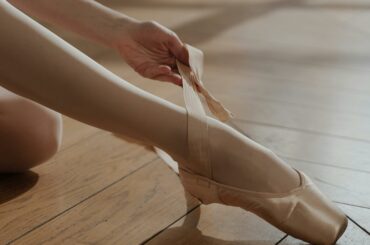Contents
Origins and Development of Outlet Stores
The story of outlet stores starts in the 1930s in the United States. Initially, outlets were simple locations where manufacturers sold damaged or excess goods directly to employees at a discount. The idea was to get rid of leftover products without wasting them. Over time, the concept grew, and outlets began to attract regular customers who wanted quality goods at lower prices.
By the 1970s and 1980s, outlets had become popular shopping destinations. Large outlet malls were built, often located outside of city centers, offering a wide variety of brands in one place. People would travel long distances to shop at these outlets, seeking deals on clothing, shoes, and accessories. Today, outlet stores are an integral part of the fashion industry, known for offering discounts on popular brands.
How Retail Stores Have Evolved in Comparison
On the other hand, retail stores have a longer and more complex history. Traditional retailing dates back to ancient times when markets and bazaars were the primary places for buying and selling goods. With the Industrial Revolution in the 18th and 19th centuries, retail stores began to change. Mass production meant more products were available, and specialized retail shops started to emerge.
The late 19th and early 20th centuries saw the rise of department stores, which offered a wide variety of goods under one roof. These stores provided a more convenient shopping experience with a focus on customer service and quality. As cities grew, so did the number of retail stores, making shopping more accessible to everyone.
In the mid-20th century, shopping malls became popular, bringing multiple retail stores together in one location. This era also saw the rise of brand-specific retail stores, allowing customers to buy directly from their favorite brands. Unlike outlets, these retail stores typically focused on offering the latest trends and high-quality merchandise at full price.
Comparing Outlet and Retail Today

Today, both outlet and retail stores play important roles in the fashion industry. Outlet stores are known for their discounts and are perfect for bargain hunters looking for good deals on brand-name products. They often carry older collections, overstock, or slightly imperfect items.
Retail stores, on the other hand, focus on providing the latest trends and high-quality goods. They offer a more curated shopping experience, with new collections and a greater emphasis on customer service.
While outlets began as a way to sell excess and damaged goods at a discount, they have evolved into popular shopping destinations. Retail stores, with their longer history, have continually adapted to changes in society and consumer behavior, maintaining their place as key players in the fashion industry. Both outlets and retail stores cater to different needs and preferences, making them both essential to how we shop today.
Manufacturing Differences: Outlet vs. Retail
Production Processes for Outlet vs. Retail Merchandise
When it comes to making clothes and accessories, the production process can be quite different for outlet and retail merchandise.
Retail merchandise is usually produced first. These are the items you see in high-end stores, displaying the latest fashion trends. The production process for retail items is meticulous. Designers create new collections, selecting the finest materials and paying attention to every detail. Factories follow strict guidelines to ensure each piece meets high-quality standards. The goal is to make products that look great and feel luxurious, attracting customers who want the best and newest styles.
Outlet merchandise, on the other hand, often follows a different path. Sometimes, outlet items are simply leftover stock from retail stores. These could be pieces from last season or items that didn’t sell as well. In other cases, brands create products specifically for outlet stores. These items are designed to look similar to retail products but are made using different, often less expensive materials. The production process might be quicker and less detailed to keep costs low and prices attractive for bargain shoppers.
Quality Control Standards in Outlet vs. Retail Manufacturing
Quality control is another area where outlet and retail merchandise differ significantly.
For retail merchandise, quality control is a top priority. Each item goes through multiple checks during the production process. Inspectors look for any defects in the fabric, stitching, and overall construction. Retail products must meet high standards because customers expect the best when they pay full price. Even minor flaws can lead to items being rejected.
In outlet merchandise, quality control standards are often more relaxed. While brands still aim to produce good quality items, the emphasis is on cost-saving. This means that slight imperfections, such as a minor misalignment in stitching or a small mark on the fabric, are usually acceptable for outlet products. These imperfections are often not noticeable to the average shopper, but they are enough to prevent the items from being sold at retail prices.
However, it’s important to note that not all outlet merchandise is of lower quality. Some items might simply be surplus stock or past season designs that didn’t sell in retail stores. These pieces can be of the same quality as their retail counterparts but are offered at a lower price to clear out inventory.
while retail merchandise focuses on the latest trends and highest quality with strict production and quality control processes, outlet merchandise often prioritizes cost-efficiency and may include items with minor imperfections or older designs. Both types of merchandise have their place, catering to different shopper needs – those looking for the latest high-quality fashion at retail stores, and those seeking good deals and slightly older styles at outlet stores.
Product Differentiation: Outlet vs. Retail
Identifying Differences in Materials Used

When shopping for clothes and accessories, one big difference between outlet and retail products is the materials used.
Retail products are often made with higher-quality materials. Designers and brands select the best fabrics, such as fine cotton, silk, and high-grade leather, to create their latest collections. These materials look and feel luxurious, making retail items stand out. For instance, a retail store might offer a dress made from pure silk, giving it a smooth texture and elegant drape that shoppers love.
Outlet products, on the other hand, might use more cost-effective materials. While they still look good, the fabrics might be different from those in retail products. Instead of pure silk, an outlet dress might be made from a silk blend or synthetic material. This helps keep prices lower, making fashionable items more affordable for bargain hunters.
Variation in Design and Style
Another key difference between outlet and retail products is in design and style.
Retail products feature the latest trends. Designers create new and unique pieces each season, aiming to set new fashion trends. Retail stores often have the newest styles first, with intricate designs, bold colors, and innovative cuts. When you shop at a retail store, you’re seeing the freshest ideas straight from the designers’ studios.
Outlet products might offer different designs. Sometimes, these are past season items that didn’t sell in retail stores. While they are still stylish, they might not reflect the absolute latest trends. In other cases, brands design specific collections for outlet stores. These designs are often simpler and may include fewer embellishments or intricate details. For example, a retail jacket might have fancy buttons and detailed stitching, while an outlet version might have simpler buttons and basic stitching to reduce costs.
The materials and designs used in outlet and retail products can vary significantly. Retail products tend to use higher-quality materials and showcase the latest styles with intricate designs. Outlet products often use more affordable materials and feature simpler, past-season designs. Both types of products offer great fashion choices, catering to different needs – retail for those seeking the newest trends and highest quality, and outlet for those looking for stylish deals at a lower price.
Pricing Strategies: Outlet vs. Retail
How Pricing Models Differ Between Outlets and Retail Stores

When it comes to pricing, outlet and retail stores use different strategies to attract customers.
Retail stores usually sell their products at full price when they first arrive. These prices reflect the high-quality materials and the latest designs that retail stores offer. Brands set these prices to cover the costs of production, marketing, and maintaining a premium shopping experience. Occasionally, retail stores may have sales or offer discounts, but these are typically limited to end-of-season items or special events.
Outlet stores, however, are known for their lower prices. These prices are often set to clear out excess inventory or past season items that didn’t sell in retail stores. Additionally, outlet stores may offer products specifically made for outlets, which are designed to be sold at a lower price from the start. The goal is to provide customers with good deals on brand-name items, making it a popular shopping destination for bargain hunters.
The Impact of Discounts and Promotions on Perceived Value
Discounts and promotions can greatly influence how customers perceive the value of products.
In retail stores, discounts are less frequent but can create a sense of urgency and exclusivity when they do occur. Customers might feel they are getting a rare opportunity to buy high-quality, trendy items at a lower price. This can make the discounted items feel even more valuable.
In outlet stores, discounts are a regular part of the shopping experience. Shoppers often expect to find deals and may feel like they are getting more for their money. However, this constant availability of discounts might lead some to perceive outlet products as being of lower quality, even if they are from the same brand.
Brand Perception and Consumer Psychology
How Consumers Perceive Outlet vs. Retail Quality
Consumers often perceive the quality of outlet and retail products differently.
Retail products are generally seen as higher quality because they feature the latest designs and are made from premium materials. Shoppers associate retail stores with exclusivity and fashion-forward trends, which enhances the perceived value of these products.
Outlet products, while still from well-known brands, may be seen as slightly lower in quality. This perception can be due to the use of different materials or the fact that they are often past season items. However, many consumers appreciate the value they get from outlets, enjoying brand-name items at reduced prices.
Psychological Factors Driving Consumer Choices Between the Two
Several psychological factors influence whether a consumer shops at an outlet or a retail store.
Retail shoppers often seek the latest trends and the best quality. They may value the shopping experience, including the ambiance of the store and the customer service. For these shoppers, paying a higher price is worth it for the prestige and satisfaction of owning the newest fashion items.
Outlet shoppers are typically more price-conscious. They enjoy the thrill of finding a good deal and may be more focused on the practicality of their purchases. These consumers might feel smarter for spending less on brand-name items, even if the products are from a previous season or made with different materials.
Fashion Trends and Seasonal Merchandise
How Outlets Handle Out-of-Season or Overstock Merchandise
Outlet stores play a key role in managing out-of-season or overstock merchandise. When retail stores have leftover items from previous seasons or excess inventory, these products often end up in outlet stores. This allows brands to clear their stock without resorting to heavy discounts in their retail locations. Outlets offer these items at reduced prices, providing shoppers with the opportunity to buy brand-name products at a fraction of the original cost. This system benefits both the brand, by clearing inventory, and the consumer, by offering great deals.
The Role of Retail Stores in Setting and Following Current Fashion Trends
Retail stores are at the forefront of setting and following current fashion trends. They launch new collections each season, showcasing the latest designs from top fashion houses and brands. Retail stores carefully curate their inventory to reflect the most current styles, colors, and fabrics. They often have elaborate displays and marketing campaigns to promote these new trends. By presenting the latest fashion, retail stores influence consumer preferences and drive the direction of the fashion industry. Shoppers looking for the newest styles typically head to retail stores to stay updated with the latest trends.
Sustainability and Ethical Considerations
Differences in Sustainability Practices Between Outlet and Retail Stores

Retail stores often lead the way in sustainability practices within the fashion industry. Many high-end brands and retail stores are committed to using eco-friendly materials, reducing waste, and ensuring fair labor practices. They may adopt sustainable production techniques, such as using organic cotton or recycled materials, and implement programs to minimize their carbon footprint. Retail stores also tend to promote their sustainability efforts as part of their brand image, appealing to environmentally conscious consumers.
Outlet stores, while still part of the same brands, may have different approaches to sustainability. Since outlets deal primarily with overstock and out-of-season items, they inherently contribute to reducing waste by finding new homes for unsold merchandise. However, outlet-specific products might not always adhere to the same stringent sustainability standards as retail products. This is because the focus in outlets is often on affordability, which can sometimes limit the use of more expensive sustainable materials.
Ethical Considerations in Production and Sales
Retail stores often emphasize ethical considerations in their production and sales processes. Brands associated with retail stores usually ensure their products are made in factories that follow fair labor practices, providing safe working conditions and fair wages. Ethical production is a significant selling point, and many consumers are willing to pay more for products that align with their values.
Outlet stores, while still offering products from these brands, might not always highlight these ethical considerations as prominently. However, the ethical practices of the parent brand still apply to the items sold in outlets. It’s important for consumers to remember that even though outlet items are less expensive, they are often still produced under the same ethical guidelines as retail products. The main difference lies in the focus of marketing and consumer perception, rather than the actual ethical standards.





